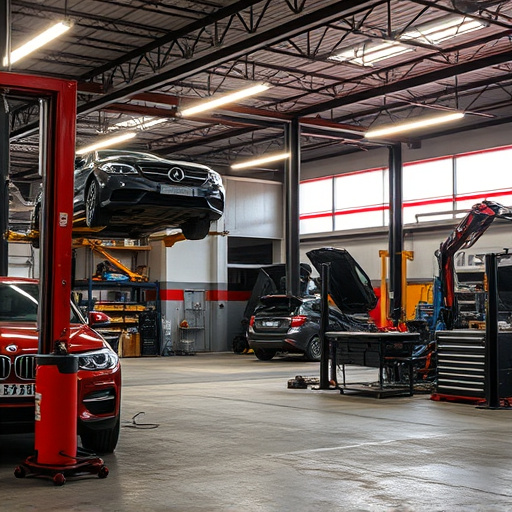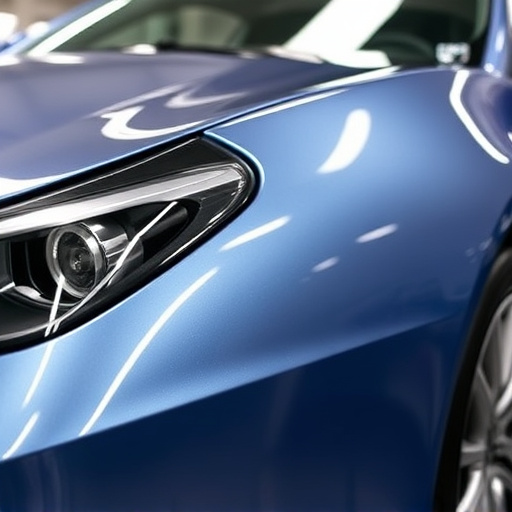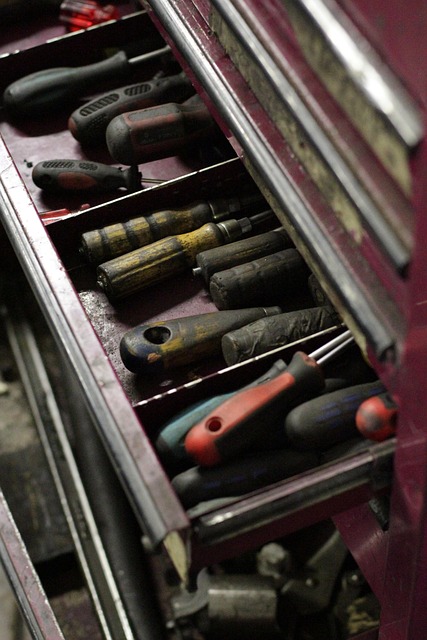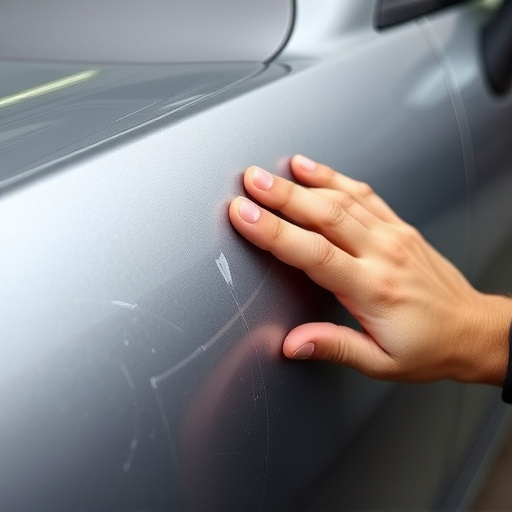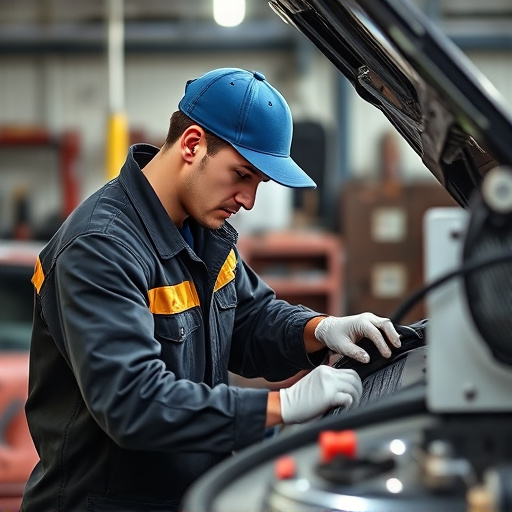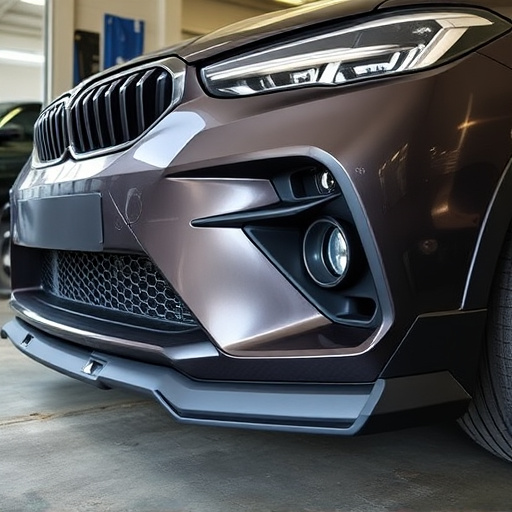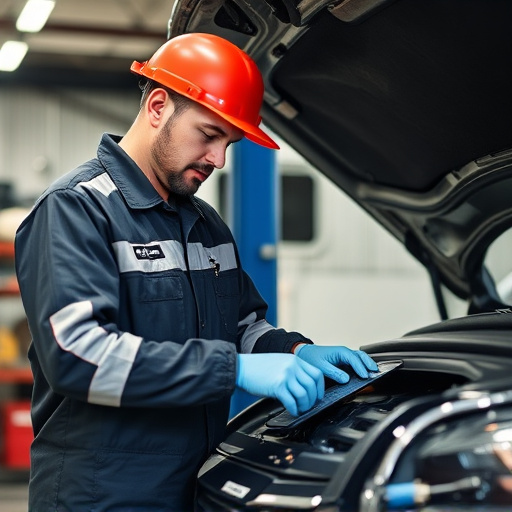Wheel arch replacement is a critical process for maintaining vehicle stability and aesthetics, addressing damage from minor scratches to severe structural issues. For minor repairs, professional scratch repair suffices, but major damage may require replacing the entire wheel arch. This intricate procedure prioritizes structural integrity while adhering to environmental safety standards, enhancing overall vehicle performance and safety. Auto repair shops must choose eco-friendly parts, follow strict disposal protocols for old components, and utilize dedicated recycling programs to prevent contamination. Compliance with environmental safety standards is vital, especially as the automotive industry shifts towards sustainability, with trends like advanced composite materials, 3D printing, and paintless dent repair techniques reducing waste and emissions.
Wheel arch replacement, a critical component of vehicle customization and repair, has evolved beyond aesthetics. As environmental consciousness grows, understanding its impact on safety and sustainability is crucial. This article explores the process of wheel arch replacement, delving into its environmental implications and the importance of compliance with safety standards. We’ll also discuss best practices and emerging eco-friendly trends in this dynamic sector, highlighting the balance between style and sustainability.
- Understanding Wheel Arch Replacement: The Process and Its Impact
- Environmental Safety Considerations for Wheel Arch Replacement
- Ensuring Compliance: Best Practices and Future Trends in Eco-Friendly Arch Replacements
Understanding Wheel Arch Replacement: The Process and Its Impact

Wheel arch replacement is a specialized process that involves the repair or reconstruction of damaged wheel arches on vehicles. These arches, located on either side of the car’s wheels, are not merely aesthetic components; they play a crucial role in structural integrity and vehicle stability. When a wheel arch sustains damage—whether from accidents, road debris, or cosmetic issues—it requires careful attention to ensure both safety and aesthetics.
The process typically begins with assessing the extent of the damage. For minor scratches or dents, professional scratch repair techniques can restore the arch’s original appearance. However, more severe cases may necessitate a complete replacement, involving precise cutting, shaping, and fitting of new materials to match the vehicle’s specifications. This is especially important in luxury vehicle repairs, where maintaining the car’s exquisite finish is paramount. The impact of wheel arch replacement extends beyond aesthetics; it significantly contributes to environmental safety compliance by ensuring structural integrity, thus enhancing overall vehicle performance and safety standards.
Environmental Safety Considerations for Wheel Arch Replacement

When undertaking wheel arch replacement, environmental safety compliance is paramount. This involves careful consideration of the materials used and their disposal to minimize ecological impact. For instance, auto repair shops should opt for eco-friendly replacement parts that are free from harmful substances like heavy metals and volatile organic compounds (VOCs). Proper disposal protocols must be followed to ensure that old wheel arch components do not contaminate soil or water sources.
Additionally, the process of wheel arch replacement can generate debris, including shattered auto glass replacement pieces and remnants of autobody repairs. To mitigate environmental harm, these materials should be collected, sorted, and disposed of appropriately according to local regulations. This involves utilizing dedicated recycling programs for automotive parts and ensuring that any hazardous waste is handled by licensed facilities to prevent pollution.
Ensuring Compliance: Best Practices and Future Trends in Eco-Friendly Arch Replacements

Ensuring compliance with environmental safety standards is an integral part of any wheel arch replacement process. As the automotive industry shifts towards sustainability, eco-friendly practices are no longer an option but a necessity. Auto body shops offering wheel arch replacements must adapt to meet these demands, focusing on minimizing waste and using environmentally conscious materials. One of the best practices is adopting paintless dent repair techniques, which reduce the need for traditional painting processes, thereby cutting down on volatile organic compounds (VOCs) emissions.
Future trends in eco-friendly wheel arch replacements include the integration of advanced composite materials that are not only durable but also recyclable. Additionally, digital technologies like 3D printing can aid in creating precise replacement parts, reducing material waste. These innovations not only ensure compliance with environmental regulations but also offer long-term benefits such as lighter vehicle weights, improved fuel efficiency, and reduced carbon footprints. Auto glass repair techniques that minimize the use of harmful chemicals and promote recycling further contribute to a more sustainable automotive sector.
Wheel arch replacement is not just a technical process but one that significantly impacts environmental safety. As we’ve explored, understanding the intricacies of this procedure and its ecological considerations is paramount. By adhering to best practices and embracing future trends in eco-friendly arch replacements, industries can ensure compliance with environmental standards while minimizing their carbon footprint. This multifaceted approach promises a greener future for automotive manufacturing and maintenance, making wheel arch replacement a key area of focus for sustainable development.
